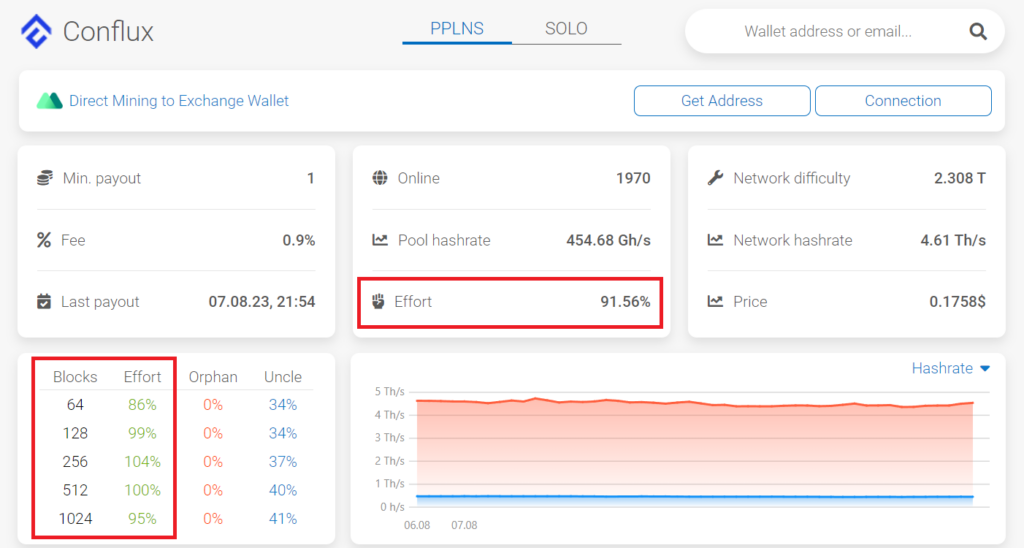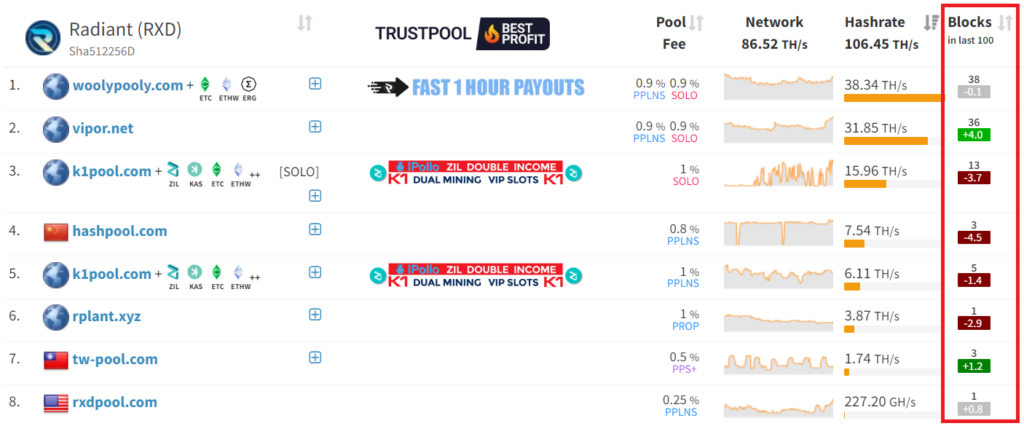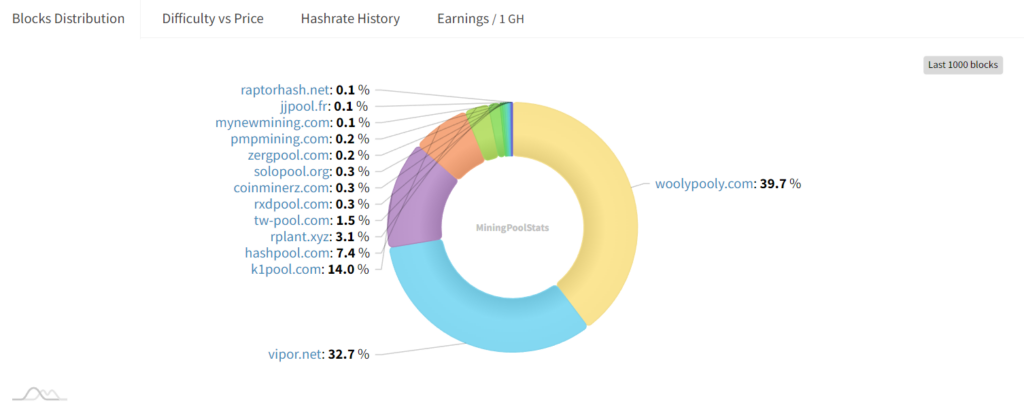In the ever-evolving world of cryptocurrency, one term has consistently piqued the interest of miners worldwide: mining luck. But what exactly is it? How does it influence your mining outcomes? And most importantly, how can you master it to ensure maximum rewards? This comprehensive guide will answer all these questions and more, offering insights into the mysterious realm of mining luck.
Table of Contents
What is Mining Luck?

Mining Luck Defined
In the realm of cryptocurrency mining, “mining luck” refers to the variance between the expected and the actual rewards a miner or a mining pool receives over a specific period. It’s a measure that helps miners understand how their actual mining outcomes compare to the statistically expected outcomes based on their hash rate and the network’s difficulty.
Historical Context
The term has its roots in the early days of cryptocurrency, where miners would often compare their expected vs. actual outcomes. Over time, as the crypto community grew, so did the importance of understanding and optimizing one’s mining luck.
The Mathematics Behind Mining Luck
At its core, mining is a probabilistic endeavor. Given the network’s difficulty and a miner’s hash rate, one can calculate the expected time or number of hashes required to find a block. Mining luck comes into play when comparing this expectation to the actual results:
- 100% Luck (or 1x Effort): This means that the miner or pool found blocks exactly as often as statistically expected.
- Greater than 100% Luck (or >1x Effort): This indicates that the miner or pool took longer than expected to find a block, implying “bad luck.”
- Less than 100% Luck (or <1x Effort): This suggests that the miner or pool found blocks faster than expected, signifying “good luck.”
Effort as an Alternative Term
Different mining pools might use alternative terms to describe this concept. For instance, on the woolypooly mining pool, this measure is referred to as “effort.” The term “effort” aptly describes the amount of work put in by the miners relative to the rewards they receive. However, since many in the cryptocurrency community are more familiar with the term “luck,” it’s often used for broader communication, even if “effort” might be a more accurate descriptor in certain contexts.
Why is Understanding Mining Luck Important?

Understanding mining luck or effort is crucial for miners for several reasons:
Performance Evaluation
It allows miners to assess their performance over time and make necessary adjustments to their mining strategy.
Setting Expectations
By understanding the probabilistic nature of mining, miners can set realistic expectations and be prepared for the inherent fluctuations in rewards.
Choosing Mining Pools
For miners participating in pools, understanding the pool’s overall luck or effort can influence their decision to continue with the pool or seek alternatives.
The Mathematics Behind Mining Luck

Probability and Chance
Mining is essentially a game of probabilities. The likelihood of solving a block and receiving a reward depends on various factors, with luck playing a significant role.
| Factor | Description |
|---|---|
| Hash Rate | The speed at which a miner can solve cryptographic puzzles. |
| Difficulty | A measure of how hard it is to mine a new block. |
| Expected Rewards | The rewards a miner expects based on their hash rate and network difficulty. |
| Actual Rewards | The actual rewards received by the miner. |
Calculating Luck / Effort
Mining luck can be calculated using the formula:
Luck = Number of Submitted Hashes / Actual Difficultyor
Luck = Expected Rewards / Actual RewardsMeasuring and Tracking Your Mining Luck

Importance of Consistent Tracking
- Optimization: By regularly monitoring mining luck, miners can make informed decisions about hardware and software optimizations, pool selection, and other factors that influence mining outcomes.
- Financial Planning: Understanding luck trends can help miners anticipate potential rewards and plan their finances accordingly.
- Troubleshooting: An extended period of bad luck might indicate underlying issues with the mining setup, such as hardware malfunctions or suboptimal configurations.
Historical Analysis
- Comparative Analysis: By comparing their luck over different periods (e.g., daily, weekly, monthly), miners can identify patterns, anomalies, or significant shifts in their mining performance.
- Benchmarking: Miners can compare their luck with the average luck of their mining pool or with other miners using similar setups. This can provide insights into the relative efficiency of their operations.
Tools and Platforms for Monitoring
Several platforms and tools can help miners monitor their mining luck:
- Mining Pool Dashboards: Most mining pools provide dashboards where miners can track their luck, often in real-time. These dashboards offer insights into recent blocks, hash rate, and other relevant metrics.
- Dedicated Mining Software: Some mining software solutions come with built-in features to track and report mining luck over time.
- Third-party Analytics Tools: There are tools and platforms like MiningPoolStats specifically designed to analyze and visualize mining data, helping miners understand trends and patterns in their luck.


Myths and Misconceptions About Mining Luck

1. Myth: Mining Luck is Purely Based on Chance
- Reality: While the term “luck” suggests randomness, mining luck is more about statistical variance. It refers to the difference between the expected and actual rewards a miner receives over a specific period. While there’s an element of unpredictability, other factors like hash rate, network difficulty, and mining pool size play a significant role.
2. Myth: Higher Investment in Hardware Always Leads to Better Luck
- Reality: While better hardware can improve your chances of solving a block, it doesn’t guarantee better luck. Mining luck can still vary due to network conditions, software efficiency, and other external factors.
3. Myth: Joining a Bigger Mining Pool Guarantees Better Luck
- Reality: Joining a larger mining pool can lead to more consistent rewards because of the combined hash rate. However, the rewards are also split among more participants. It doesn’t necessarily mean you’ll have better luck; it just reduces the variance in payouts.
4. Myth: Mining Luck Remains Constant Over Time
- Reality: Mining luck can fluctuate over time based on various factors, including changes in network difficulty, total hash rate, and even the inherent randomness of block discovery.
5. Myth: If I’m Currently Experiencing Good Luck, It Will Continue
- Reality: Past performance isn’t indicative of future results. Just because a miner experiences a streak of good luck doesn’t mean it will continue indefinitely. Similarly, a run of bad luck doesn’t mean it won’t turn around soon.
6. Myth: Solo Mining Always Results in Poorer Luck Compared to Pool Mining
- Reality: Solo mining means you’re working alone to find a block. While the payouts can be infrequent (leading some to believe they have “bad luck”), when they do occur, they’re significant. In contrast, pool mining offers more consistent but smaller rewards. Both methods have their pros and cons, and neither inherently offers better luck.
7. Myth: Mining Luck Doesn’t Affect Profitability
- Reality: While it’s true that over a long enough timeline, luck tends to average out, short-term variations in mining luck can significantly impact a miner’s profitability, especially when considering electricity costs, hardware wear-and-tear, and other operational expenses.
Understanding the nuances of mining luck and distinguishing between myths and reality is crucial for anyone involved in cryptocurrency mining. It allows miners to make informed decisions, set realistic expectations, and optimize their operations for the best possible outcomes.
Conclusion
The realm of cryptocurrency mining is a complex interplay of technology, strategy, and a bit of inherent unpredictability, often referred to as “mining luck.” While the term might suggest a game of chance, in reality, it’s a reflection of the variance between expected and actual outcomes in the mining process. This variance, whether termed as “luck” or “effort,” is a critical metric that can significantly influence a miner’s profitability and strategic decisions.
Measuring and tracking one’s mining luck is not a mere exercise in data analysis but a vital practice that offers actionable insights. By understanding the trends and patterns in their mining luck, miners can make informed decisions about their operations. Whether it’s tweaking hardware configurations, switching mining pools, or diversifying their mining portfolio, these decisions are grounded in the data derived from consistent luck tracking.
Moreover, in an industry as dynamic and competitive as cryptocurrency mining, staying informed and adaptable is the key to success. Regularly monitoring mining luck provides miners with a feedback loop, allowing them to continuously refine their strategies, anticipate challenges, and seize opportunities. It’s this iterative process of measure, analyze, and optimize that separates successful miners from the rest.
In essence, while the world of cryptocurrency mining might seem shrouded in complexity and unpredictability, tools and metrics like mining luck offer a beacon of clarity. By giving due importance to measuring and tracking this metric, miners can navigate the turbulent waters of the crypto world with confidence, ensuring a more predictable and prosperous journey in the long run.
FAQs
What is the ideal mining luck percentage?
Ideally, a miner would want their mining luck to be at 100%. However, values between 90% and 110% are considered standard in the industry.
Does joining a bigger mining pool guarantee better luck?
Not necessarily. While bigger pools offer more consistent rewards, they don’t necessarily guarantee better luck.


